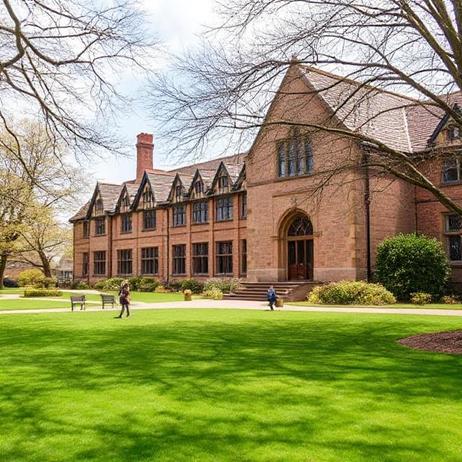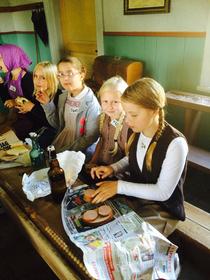Choosing a Junior Boarding School: A 2025 Guide for Families
Selecting a junior boarding school is one of the most significant decisions parents can make for their child’s education. Designed for students typically in grades 6–9, junior boarding schools combine rigorous academics with structured support, helping young adolescents develop independence, confidence, and character before entering secondary school.
As families weigh their options, the process of choosing a junior boarding school involves far more than browsing glossy brochures. Parents must carefully evaluate the academic philosophy, student support systems, community culture, and long-term outcomes of each school. This guide offers a detailed look at what to consider in 2025 when making this important choice.
What Is a Junior Boarding School?
Unlike traditional boarding schools, which often begin at grade 9, junior boarding schools are tailored to younger students—typically ages 10 to 15. These schools bridge the gap between elementary education and secondary boarding school life, providing:
Small class sizes for individualized academic attention.
Structured residential life that balances guidance with growing independence.
Advisory systems that help students transition socially and emotionally.
Extracurricular variety in athletics, arts, and leadership opportunities.
Many families see junior boarding schools as a safe and nurturing environment where children can thrive away from home while developing habits that serve them well in high school and beyond.
Why Families Choose Junior Boarding Schools
Parents consider junior boarding schools for a variety of reasons:
Academic challenge: Schools often offer advanced coursework, enrichment programs, and accelerated math and language tracks.
Independence: Students learn to manage time, organize assignments, and take responsibility for their routines.
Diverse peer community: Many schools attract students from across the U.S. and around the world, creating a global perspective early on.
Preparation for secondary school admissions: Junior boarding graduates are often sought after by prestigious day and boarding high schools.
According to the Association of Boarding Schools (TABS), outcomes for boarding students consistently show higher levels of engagement and satisfaction compared to their day-school peers.
Key Factors to Consider When Choosing
1. Academic Philosophy and Curriculum
Each junior boarding school has its own approach to teaching. Parents should ask:
Does the curriculum emphasize inquiry-based learning or traditional instruction?
What enrichment and support systems exist for advanced learners or those who need additional help?
How do students transition academically into secondary schools afterward?
2. Faculty and Student Support
Adolescents thrive when teachers act as mentors. Look for schools where:
Faculty live on campus and are deeply engaged in student life.
Each student is paired with an advisor for consistent guidance.
Counseling services and wellness programs are integrated into daily routines.
3. Residential Life and Community Culture
Junior boarding is as much about character development as it is about academics. Important considerations include:
Dormitory structure: Are dorms age-appropriate, with resident faculty present?
Community traditions: Do schools foster a sense of belonging through events, sports, and leadership opportunities?
Safety and well-being: How are supervision, health services, and digital device usage managed?
4. Extracurricular and Enrichment Opportunities
A well-rounded education extends beyond the classroom. Schools may offer:
Performing arts, music, and visual arts programs.
Competitive athletics at a variety of levels.
Clubs ranging from robotics to debate, fostering both creativity and teamwork.
5. Location and Accessibility
Parents should weigh factors like proximity to home, airport accessibility for international families, and the benefits of rural vs. suburban environments. Many junior boarding schools in New England, for example, highlight their safe, scenic campuses as part of their appeal.
6. Cost and Financial Aid
Tuition at junior boarding schools can be significant, averaging between $40,000 and $65,000 annually in 2025. However, many institutions offer need-based aid and merit scholarships. Parents should review each school’s financial aid policies carefully and ask about additional fees for travel, supplies, and extracurriculars.
| Factor | Why It Matters | Key Questions to Ask Parents/Schools |
|---|---|---|
| Academics | Ensures intellectual growth | How does the school challenge and support students? |
| Faculty Engagement | Builds mentorship and stability | Do teachers live on campus and serve as advisors? |
| Residential Life | Shapes independence and character | What daily routines and structures support student well-being? |
| Extracurriculars | Encourages holistic development | What sports, arts, and clubs are available? |
| Cost & Aid | Determines affordability | What financial aid is offered, and what’s included in tuition? |
| Location | Impacts accessibility and environment | How close is the school to home or major transportation hubs? |
Visiting Junior Boarding Schools
Virtual tours have improved in recent years, but there is no substitute for an in-person visit. When touring a junior boarding school, parents should:
Sit in on classes to observe teaching styles.
Tour dormitories and dining halls to get a sense of daily life.
Speak with students about their experiences and transitions.
Ask admissions officers about secondary school placement outcomes.
The Independent Educational Consultants Association (IECA) offers resources for families working with consultants who can arrange visits and guide the admissions process.
The Admissions Process
Applications typically open a year in advance. Most junior boarding schools require:
An application form and essays from both parents and students.
Standardized test scores (such as SSAT or ISEE), though some schools have adopted test-optional policies in 2025.
Teacher recommendations and transcripts.
An admissions interview—often a chance for the student to show curiosity and enthusiasm.
Families should begin researching schools by late spring of the year prior to entry, with applications submitted by December or January.
Outcomes and Next Steps
Graduates of junior boarding schools often matriculate into selective day and boarding high schools. In addition to academic readiness, students gain valuable life skills:
Time management and study habits.
Confidence in adapting to new environments.
Leadership experience in residential and extracurricular contexts.
As the National Association of Independent Schools (NAIS) highlights, students who experience independent school education earlier tend to show higher resilience and adaptability.
Final Thoughts
Choosing a junior boarding school is a deeply personal process, shaped by each child’s needs and family priorities. The right school offers not only academic preparation but also a safe, nurturing community where children learn to thrive independently.
Parents should take time to compare programs, visit campuses, and ask thoughtful questions. With careful consideration, a junior boarding school can be the ideal stepping stone between childhood and young adulthood, equipping students with skills and friendships that last a lifetime.












